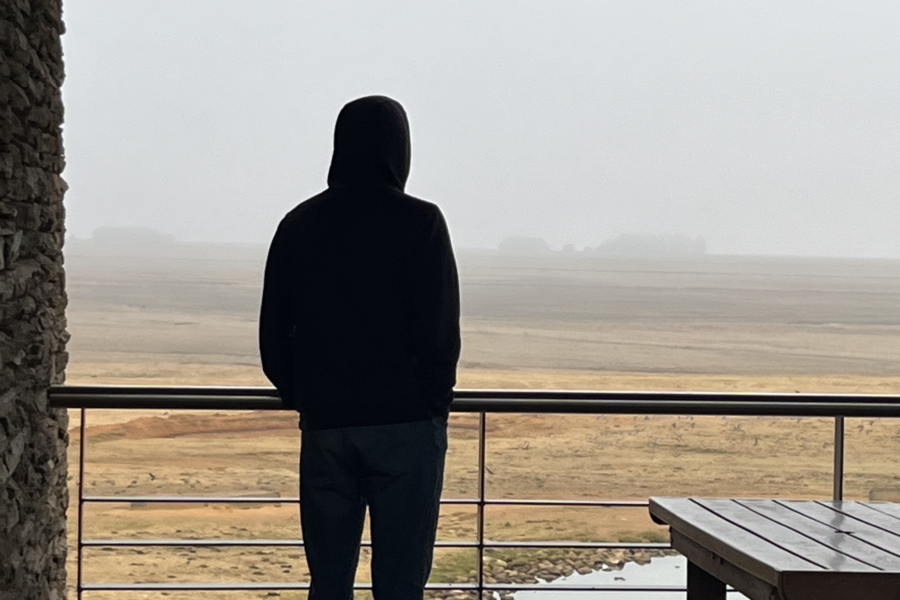I feel your pain.
This well-meaning expression is meant to communicate empathy, yet often can come across as patronizing and insincere. Of course, it is not possible to understand the exact emotional and affective state experienced completely within the mind of another human being. Even in medicine, subjective states have yet to be rigorously quantified; to gauge pain, doctors ask patients to rate their pain out of 10, but the way in which the qualitative experience of pain maps onto this numerical scale is unique for each individual. No one–not even physicians trained extensively to extrapolate your subjective experience from your signs and symptoms– can truly understand the anger, disgust, joy, and, of course, pain that you feel.
I started thinking about the failure to achieve perfect empathy when a few classmates and I were sick with a random but surprisingly potent virus (let’s call it a flu to make myself feel more legitimate). While I was uncontrollably shivering in the throes of a high fever, I felt as if no one could possibly understand the experience I was going through. Just hours later, after I had temporarily placated my fever through the miracle drug some call Tylenol, Anika texted me that she felt awful and her fever had spiked. Somehow, I found it difficult to imagine exactly what she was feeling; even though I had literally just experienced something very similar, I was no longer actively experiencing the pain and, therefore, failed to grasp its extent.
Our inability to fully take on others’ emotional and affective states– positive or negative– is probably for the best. In a social neuroscience course I took last fall, we learned that insecurely attached mothers show high levels of activity in the brain’s pain center when viewing their infants crying, potentially exposing them to a phenomenon called empathic distress which can lead to rapid burnout. In contrast, upon seeing their sobbing infants, securely attached mothers show brain activity in areas supporting prosocial behavior, suggesting a more adaptive and compassionate response. This indicates that not only might it be individually beneficial to avoid internalizing the pain of someone else, but this emotional distance may also protect and nourish our ability to help others.
Paradoxically, however, this emotional distance is precisely the gap that international organizations, museums, and activists seek to bridge when communicating past and present suffering, pain, and joy to individuals who may lack a personal connection to the relevant events. The most effective historical sites I have visited, in my opinion, taught me valuable information but also–arguably more importantly–expertly utilized sound, lighting, and artifact placement to immerse me in the emotional landscape of the historical event or movement. Similarly, the goal of our final film project is to find the “common bonds of humanity” that will engender empathy and compassion among viewers; to the extent possible, we want our audience to experience the emotional arc of the narrative we are presenting.
But it is certainly possible to go too far in this exercise of manufacturing empathy. How do we conceptualize our responsibility as communicators to avoid causing gratituitous and undue distress when inducing emotional states in our viewers? How do we draw the line in the sand between emotional communication and emotional manipulation? On the other side of the screen, as consumers of countless pieces of media each day, how do we prepare ourselves to allow upsetting stories to inspire transformative action instead of rendering us nihilistic?
I do not have decisive answers to any of these questions, and I’m not sure I ever will. However, I do believe that effectively communicating emotional stories is essential for fostering interpersonal connections, drumming up support for worthy causes, and inspiring meaningful change– and I regard film as a medium that is well-suited to this challenge. I look forward to learning how to strike a healthy balance between information and emotion while constructing a narrative for our film project that is informative, inspiring, and emotionally moving for viewers.
Furthermore, after the experience of creating our product, I anticipate that my classmates and I will turn a more keen eye to the motivation and goals of the media we consume. Will this make us more critical consumers? Absolutely. More cynical? Perhaps, but I like to think that we possess the ability to recognize the tactics behind a piece of media while remaining open to inspiration and empathy. Who knows– we might even learn to keep our empathy in the sweet spot of inducing prosocial behavior without causing burnout.









Incredibly thought-provoking. The question, “…how do we prepare ourselves to allow upsetting stories to inspire transformative action instead of rendering us nihilistic?” was personally my favorite. Thank you Ben as always!